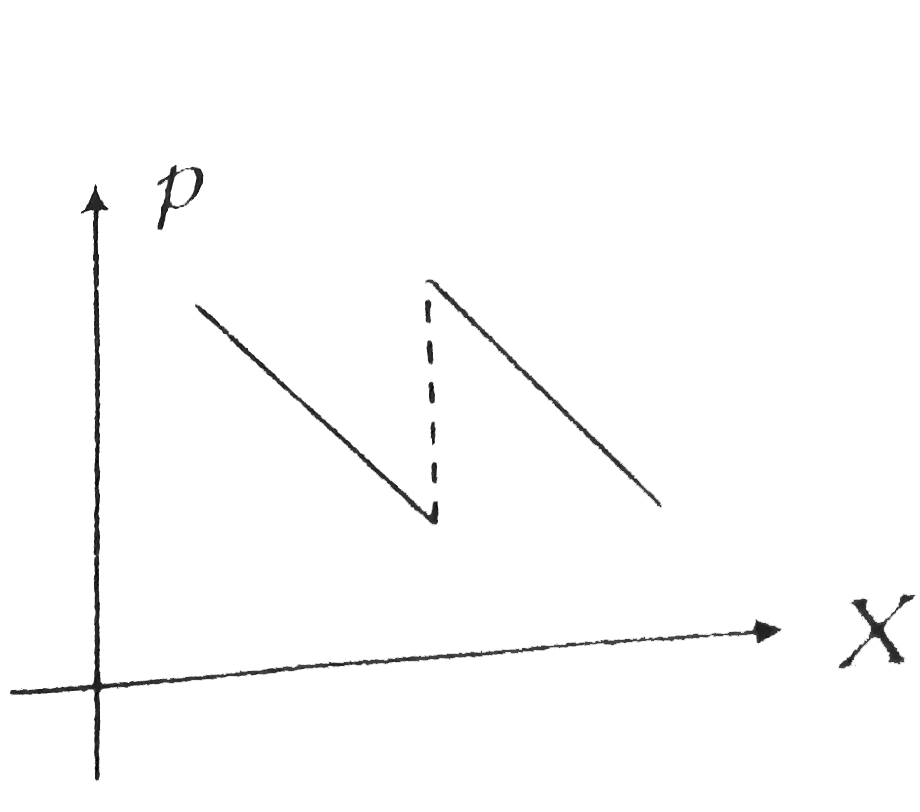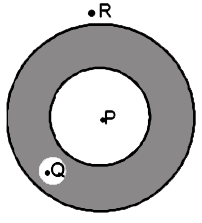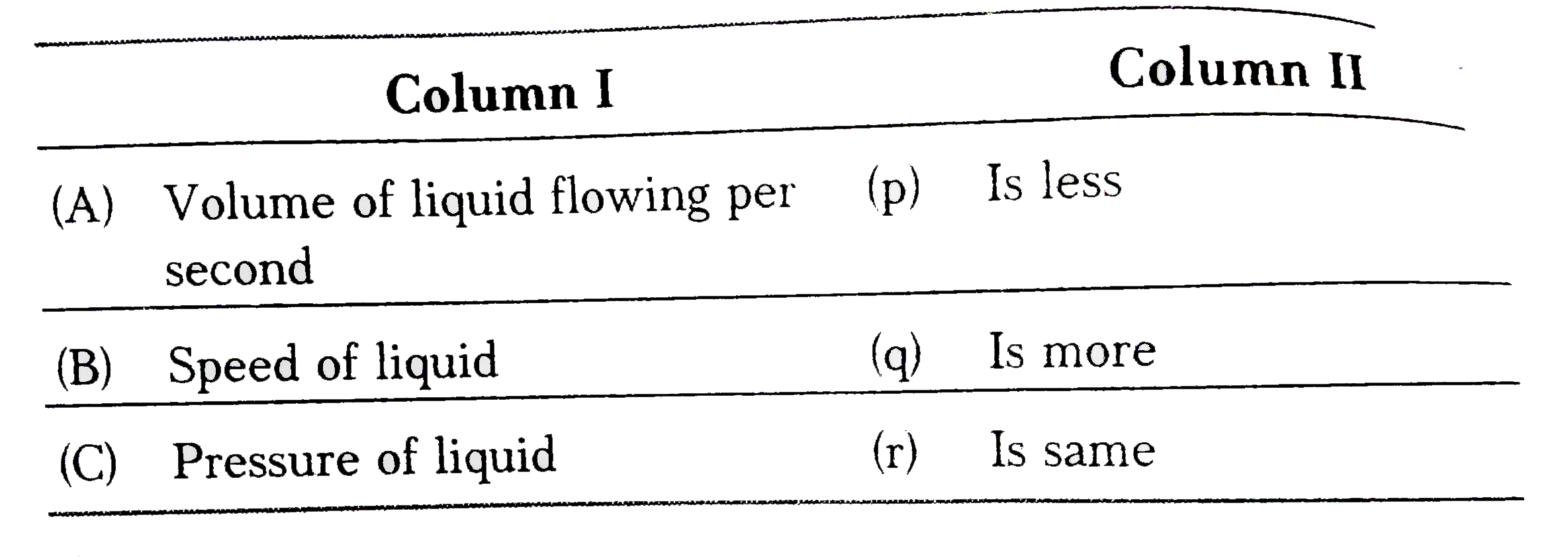A non-viscous liquid is flowing through a non-uniform pipe from section A to section B as shown in the figure. Cross sectional area of the pipe at A is less than that at B. Which of the following statements are correct?

The pressure at A is greater than that at B
Velocity at A is greater than that at B
Total energy per unit volume of the liquid is greater at A than at B
Axis of the pipe cannot be horizontal
The correct Answer is:A, B, D
Here liquid is flowing form A to B. Hence PA>PB
According to the equation of continuity,
a1v1=a2v2
As a2>a1, hence v1=v2 As the liquid is non viscous, there is no loss of energy i.e., energy per unit volume of the liquid is the same at every point.
So option c is correct
Here PA>PB, so vA>vB and energy /volume of liquid is same at every point. So (PE)A<(PE)B.
Hence, section A must be at the lower level than section B i.e., the pipe cannot be horizontal.
Topper's Solved these Questions
- FLUID MECHANICSBOOK - CENGAGE PHYSICSCHAPTER - FLUID MECHANICSEXERCISE - Assertion-Reasoning
8 Videos
- FLUID MECHANICSBOOK - CENGAGE PHYSICSCHAPTER - FLUID MECHANICSEXERCISE - Linked Comprehension
43 Videos
- FLUID MECHANICSBOOK - CENGAGE PHYSICSCHAPTER - FLUID MECHANICSEXERCISE - Single Correct
95 Videos
- DIMENSIONS & MEASUREMENTBOOK - CENGAGE PHYSICSCHAPTER - DIMENSIONS & MEASUREMENTEXERCISE - Integer
2 Videos
- GRAVITATIONBOOK - CENGAGE PHYSICSCHAPTER - GRAVITATIONEXERCISE - INTEGER_TYPE
1 Videos
Similar Questions
Knowledge Check
A non viscous inconpressible liquid is flowing from a horizontal pipe of non-uniform cross section as shown, Choose the correct option
 Aspeed of liquid at section-2 is moreBvolume of liquid flowing per second from section-2 is moreCmass of liquid flowing per second at both the sections is sameDpressure at section-2 is less
Aspeed of liquid at section-2 is moreBvolume of liquid flowing per second from section-2 is moreCmass of liquid flowing per second at both the sections is sameDpressure at section-2 is lessA non viscous liquid is flowing through a frictionless duct, cross-section varying as shown in figure.

Which of the following graph represents the variation of pressure p along the axis of tube ?A B
B C
C D
D
A liquid flows through a pipe of non-uniform cross-section. If A1andA2 are the cross-sectional areas of the pipe at two points, the ratio of velocities of the liquid at these points will be
AA1A2BA1A2CA2A1D1A1A2
Current is flowing through a wire of non-uniform cross section. Cross section of wire at A is les than the cross section of wire at B. Then match the following

View SolutionA current is flowing through a conducting hollow pipe whose area of cross-section is shown in the fig. The value of magnetic induction will be zero at-

View SolutionA fluid is in streamline flow across a horizontal pipe of variable area of cross section. For this which of the following statements is correct?
View SolutionA rod is made of uniform material and has non-uniform cross section. It is fixed at both the ends as shown and heated at mid-section. Which of the following are not correct?

View SolutionWater is flowing through a horizontal pipe of non-uniform cross- section. At the extreme narrow portion of the pipe, the water will have
View Solution


